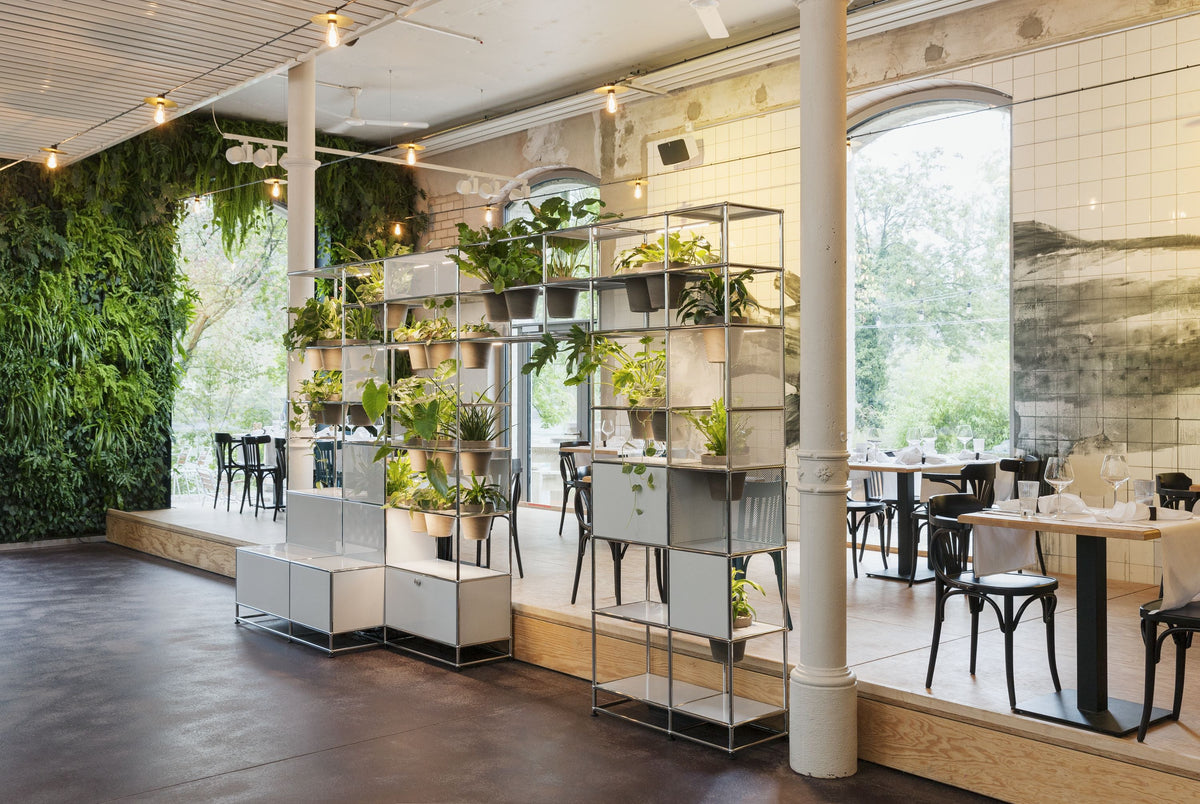
The Impact of Biophilic Design: Bringing Nature Indoors
|
|
Time to read 3 min
Written by: Alexa Roland
|
|
Time to read 3 min
In our fast-paced, urbanized world, our connection to nature often takes a back seat. However, a growing design trend is seeking to change that. Biophilic design, the art of bringing nature indoors, is gaining traction as people recognize the importance of reconnecting with the natural world. In this blog post, we'll explore the profound impact of biophilic design on our well-being and the spaces we inhabit. From its fundamental principles to practical implementation tips, you'll gain insights into how to harness the power of nature to create more harmonious, healthier, and aesthetically pleasing living and working environments.
Biophilic design is a design philosophy that emerged from the recognition that humans have an innate connection to nature. It seeks to infuse our built environments with elements of the natural world. This design approach incorporates both direct and indirect experiences of nature into interior spaces, emphasizing aspects like natural light, vegetation, and the use of organic materials.
The psychological benefits of biophilic design are profound. Research has shown that exposure to nature, even in an indoor setting, can reduce stress levels, boost mood, and enhance overall well-being. Imagine a workspace that feels like a tranquil forest or a home filled with the calming presence of greenery. Biophilic design can make this a reality.
In a study published in the Journal of Environmental Psychology, researchers found that people in environments with biophilic elements reported a 15% increase in well-being and creativity, as well as a 6% increase in productivity. Such statistics underscore the positive impact biophilic design can have on our lives.
To implement biophilic design effectively, you'll need to incorporate various natural elements into your spaces. Start by selecting organic materials like wood, stone, and bamboo for furniture and decor. These materials bring the essence of nature into your home or workplace.
Natural light is another crucial component. Optimize the use of windows to maximize natural light exposure, and consider installing skylights or light wells if feasible. Having access to daylight not only reduces the need for artificial lighting but also improves our circadian rhythms.
Moreover, introduce indoor plants, which are perhaps the most direct way to connect with nature indoors. Plants not only purify the air but also provide a sense of tranquility and vitality to any space.
Here are some practical tips to help you implement biophilic design in your spaces:
1. Choose a Nature-Inspired Color Palette: Select earthy tones, greens, and blues to mimic the colors of the natural world. These hues promote a sense of calm and relaxation.
2. Incorporate Water Features: If possible, introduce elements like indoor fountains or aquariums. The sight and sound of flowing water can be incredibly soothing.
3. Create a Nature-Focused Workspace: If you work from home, consider positioning your desk near a window with a view of nature. Alternatively, hang nature-themed artwork or photographs.
4. Natural Textures and Patterns: Use materials with natural textures and patterns, such as stone countertops, wooden floors, or floral-patterned textiles.
5. Open Shelving for Greenery: Install open shelves to display potted plants, creating a vibrant living wall that brings nature indoors.
By following these tips, you can seamlessly incorporate biophilic design principles into your environment, enhancing your connection to nature and reaping the associated benefits.
The beauty of biophilic design is its versatility. It can be applied to various settings, including homes, offices, healthcare facilities, and public spaces. Let's explore how these principles manifest in different environments:
Homes: In residential spaces, biophilic design can create an oasis of calm and relaxation. Imagine a living room with large windows that frame picturesque outdoor views or a bedroom adorned with potted plants, inviting tranquility and restful sleep.
Offices: For workplaces, biophilic design can boost employee well-being and productivity. Incorporating green walls, natural lighting, and communal areas with plant-filled nooks can transform the office into a more inviting and inspiring space.
Healthcare Facilities: In healthcare settings, biophilic design can contribute to faster healing and improved patient outcomes. The presence of nature, even in the form of art depicting natural scenes, can reduce stress and anxiety for both patients and healthcare providers.
Incorporating biophilic design into our lives offers an opportunity to rediscover our connection to nature. The psychological benefits are well-documented, and the aesthetic appeal of biophilic spaces is undeniable. By understanding the principles of biophilic design and implementing them in various settings, you can create environments that promote well-being, boost productivity, and foster a sense of harmony with the natural world. Embrace the transformative power of biophilic design and embark on a journey to bring nature indoors. Your spaces—and your well-being—will thank you.
We seek out brands that are looking to the future of design. The kinds that collaborate with the greatest design minds of our time. Family-run brands founded over half a century ago to newer brands bristling with enthusiasm. Big brand names you recognize, like B&B Italia, Moroso and Molteni & C.
Whether searching for a single light fixture, or undertaking a complete house makeover - enhance your urban space with over one hundred of the world's best furniture lines, with one stop shopping at Urbanspace Interiors.
Our in house team of design experts is here to help you refinish, redefine, and reinvigorate your urban space - whether it's a single room, a full house, or an entire downtown condo tower.







